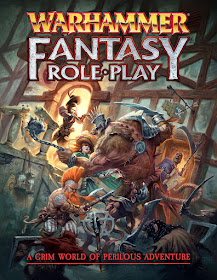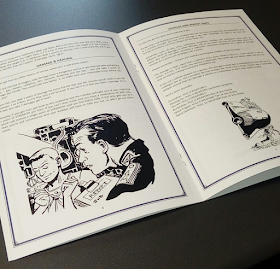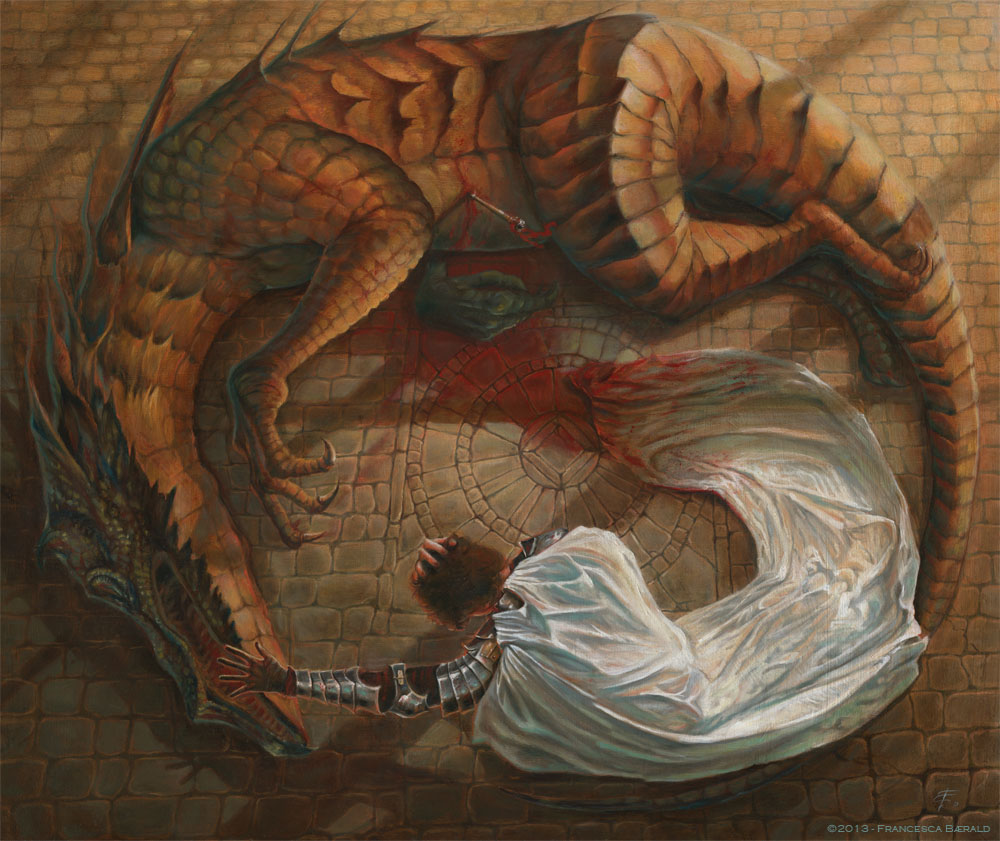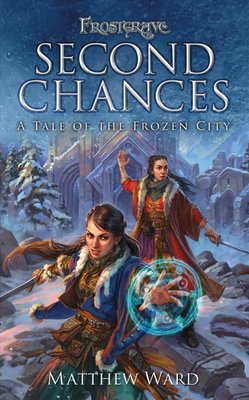
There's a new Kickstarter in town -
Capharnaum - The Roleplaying Game.
Sarah Newton at
Mindjammer Press is bringing us the English version of '
a fantasy roleplaying game set in an imaginary Arabia-like world. It borrows from the tales of the One Thousand and One Nights, as well as semitic legends and the ancient and mediaeval epics. Capharnaum doesn't aim to be a historical game, but a heroic one, a flamboyant refraction of historical, cultural, and mythical themes, filled with light and thrilling adventure!'
As of this post the
Kickstarter is still ongoing, so get over there now and have a look!
To get some further insight into Capharnaum I caught up Sarah and asked her what we can expect to see from this exciting new game.
Welcome back to the site, Sarah! So, what have you been up to recently in the tabletop RPG world? How's things in the industry?
Thanks very much indeed, Jonathan – it’s great to be back! Well, my life over the past 2 years, as I’m sure you can imagine, has been very much focussed on delivering all the cool books we were able to unlock in the Mindjammer Kickstarter of late 2015! We now have
thirteen physical products in the line, which is just an amazing tribute to the power of Kickstarter and our fantastic backers – and the last of those are just about to go out to backers this Wednesday 22 Nov 2017, leaving us with 3 PDFs and some digital support products to release during the course of next year. It’s been a hectic and creative couple of years – very inspiring!
The one thing the Kickstarter did which I should have expected and maybe didn’t enough was take up pretty much all of my time! I’ve been to relatively few conventions since the Kickstarter ended – I’ve made Dragonmeet and UK Games Expo in the UK, and Les Utopiales, La Comédie du Livre, and Au-Delà du Dragon in France, but I haven’t made it to GenCon for several years, and am really missing it! Learning from the experience, I’m hoping to remedy that!
So, tell us more about your newest project Capharnaum, the game of 'Fantastic Arabian Nights adventure in a world of deserts, dragons, and crusaders'. It sounds amazing!
It is! I found out about Capharnaum back in 2009 when I picked up the frankly beautiful first edition core book at the Paris Games Fair, and I immediately wanted to do an English-language version. It was just begging for it: this deep, massive, and compelling setting, with some wonderful supplements, epic game-play, and sensational production values. I just felt its potential. It took several years to get the conditions just right to be able to do this, but the French publisher, Studio Deadcrows, and ourselves came to an agreement in 2015 / 2016 to get cracking on a joint project, to bring Mindjammer to the French-language market, and Capharnaum to the English-language one – and now that the Mindjammer kickstarter has completed its physical deliverables, we find ourselves finally able to do so!
What was the attraction to this game and genre?
I love good world-building, and Capharnaum has it in spades. You really have to see it. The designers, François Cedelle and Raphael Bardas, explained to me that, after 9/11, they wanted a game that showed the depth and awesomeness of Middle Eastern cultures, but also did so in a way in which the games you played would transcend historical and cultural conflicts and try to build something new, something which broke the chains of history and transcended its limitations. You know me – with Mindjammer, and indeed pretty much everything I write, it’s all about going beyond, breaking down barriers, achieving our potential, whether as an individual, culture, or species – and what François and Raphael said just totally resonated with me. It’s so ambitious, and yet so timely.
So, Capharnaum is a game in which the societal and cultural norm is a fantasy version of Arabian and Middle Eastern culture. It’s a vast world – as big as our own – with analogues of major historical lands, including those such as fantasy versions of mediaeval Europe – dark age Germania, mediaeval France, early renaissance Spain – and ancient world “fallen empires” such as ancient Greece and Rome, all of the playable homelands for your characters. But the focus of the campaign, at least to begin with, is a peninsula called Jazirat, which resembles in many ways pre-Islamic Arabia, say about 500-600AD. That’s the cultural norm, that’s the land the game calls “home”, and all your mediaeval knights, dark age Viking barbarians, ancient world hoplites and oracles – well, they’re all foreigners, visitors to Jazirat, with their own agendas. They’re the “other”. I don’t really know a game which takes that decision, and then follows it through with such panache, depth, and such an obvious love of the subject matter.
A key point of the setting is the freedom. Capharnaum has religion and cultural conflicts, but, while they echo those of our own world, they’re not the same. There’s no Christianity, no Islam, no Buddhism, Zoroastrianism, Greek or Roman gods. Instead, you have the god-hero Jason Quartered, the martyred warrior, and his Quarterian Crusaders; you have Jazirat and its One Thousand and One Gods; you have the Chiromancers of ancient Agalanthia. These provide hooks for intrigue, adventure, and conflict which are similar to those of our own history, but you don’t have that worry of cultural sensitivity or historical accuracy – you have the freedom to improvise, to make the whole world and setting your own. There’s a lot of depth there for when you want it, but on the other hand the game setting is immediately understandable and accessible. It feels familiar, but there’s so much to explore.
That freedom is also reflected in the characters you play. In this fantastic refraction of our own world, many people are wedded to cultures and world-views in deadly conflict. Not so your characters. Each character in Capharnaum bears a birthmark on their back in the shape of a dragon’s claw: the Dragon-Mark. In the cosmos of Capharnaum, dragons are a big deal: they’re mysterious, semi-divine entities, perhaps servitors of the gods, perhaps even their progenitors and manipulators. In any case, the dragons – or maybe
a dragon – is keeping an eye on your character. You have the potential to become a mythic hero; you’re marked for a special, unknown destiny. You find you have more in common with other Dragon-Marked, regardless of their origins: and, once again, transcending cultural boundaries and ancient conflicts, your adventuring party is multicultural, diverse, trying to figure out your fate, how you’re supposed to – or how you want to – change the world. It’s like you’re Sinbad, Scheherezade, Ronan, Heracles, Circe, all banded together at the start of their heroic story arcs, searching for their destiny. What will you do? What will you become? How will you change the world? I mean, as a campaign concept, how cool is that?
I also loved the rules system. I’ve been working with Fate for several years, and for me my perfect system is one which is lightweight and elegant, quick to learn, but one which is also very scalable, and with a huge amount of depth and sophistication which comes out in play and with increasing system mastery. Capharnaum is like that, but it’s more traditional than Fate, it doesn’t have those narrative, meta-elements. I find French game systems have a really solid core, but they’re also expert at integrating genre-specific elements which bring out the flavour of the setting they’re designed for. Capharnaum is no exception. You’ll find it more traditional than Fate, but with some very satisfying touches which are really crunchy, fun, and really “pop” during play. It’s fast, intuitive, but also deep and explorational, and we’re incorporating all the streamlining and polish of the new 2nd edition of the French game. The magic system in particular is worth the price of the book alone: it’s an improvisational system which
works. In some ways it reminds me of what we were doing with LEGENDS OF ANGLERRE for Fate 3rd edition, but without the Fate-y side. It works on an assembly of philosophical / linguistic components called “Sacred Words” and “Elements” – you can “Create Fire”, “Transform a Person into a Camel”, or “Destroy Flesh”, for example – but the improvisational aspect is supported by concrete game effects which stop the whole thing falling into arbitrary handwaviness. It’s really nice.
What can we expect to see in the final book? The system basics, or the full game and setting with all the bells and whistles?
It’s the full game and setting with all the bells and whistles. It’s going to be at least 400 pages in two-column layout with good-sized font. It’s a gorgeous book, incidentally – top quality art, spectacular maps (I’m a major map nerd, so these were just a must-have!), the initial offering has 16 colour panels which are lovely, and we’re hoping the Kickstarter will let us produce the whole book in full colour throughout (at the moment it’s a two-tone effect, a sort of desert sepia, which looks genre-appropriate and very attractive, but I dream of colour artwork all the way!). Most of the core book is setting material – gazetteers, histories, cultural descriptions, and lots of information on the “paths” which characters can follow on their road to greatness – the Capharnaum equivalent of secret societies, cults, guilds, legions, what-have-you. The rules part of the book is probably less than 100 pages, and it’s very quick to grasp. There’s a solid foundational bestiary of 20 very flavoursome beasts native to Jazirat, and even an introductory adventure. It really is everything you need. It’s kind of a principle here at Mindjammer Press: my interest is getting the setting and its rules in your hands, and then exploring the world with campaigns and more detail which I hope will be exciting enough for you to want them. For us, the model of releasing the core system over multiple books isn’t the right one, it’s not how I want to work.
That said, the supplements for Capharnaum are fantastic! There’s a complete Bestiary – that’s the nearest the system comes to a “second rules book”. It expands the core book bestiary hugely, by delving into the cultural depths of Jazirat, into the demons and spiritual entities of the land, and then going overseas, with the critters you can find in other lands. It’s also very readable in its own right: that’s one of the things I love about Capharnaum, all the books are a damn fine read, even without playing them (although we hope you’ll do that too!). I’ve taken a great deal of time to make sure the writing in the book is the best it can be. The initial translation has been done by José Luis Porfirio (QIN, KURO, FINAL CONFLICT: XCORP, SHAYO) – we already have the core book ready to go for a swift delivery in March/April 2018 – but I’m also a French speaker, and I’ve edited, restructured, rewritten, and even added to and changed things here and there so it’s a very smooth read and also conveys the setting and material effectively.
So, in addition to the Capharnaum core book and Bestiary, we have a player’s guide, a screen, two scenario packs, an atlas, and then this massive, world-spanning, globe-shattering, epic campaign which can provide the whole framework for your play in Capharnaum. That’s one
big book – we think it’ll be a good 300 pages in English version – and can plug in beginning, intermediate, and even advanced characters, and also gives room for GM detours, sub-campaigns, and other scenarios along the way. And we have lots of other surprises along the way in the Kickstarter as we start to unlock stretch goals…
What kind of support will the game receive in the future?
That’s one of the lovely things about the deal we have with Studio Deadcrows. Our license lets us publish original material. That’s why we’re asking backers and the RPG gaming community to really jump on board with Capharnaum. It’s not a closed, finite product, but the beginning of a fantastic new game and setting in the English-language RPG world. Please jump in on the
Kickstarter and help us unlock the core book and its series of stretch goals. Mindjammer Press is committed to Capharnaum as our fantasy-historical RPG – it has everything I’ve ever dreamed of in a historical-themed game, from history and politics, military campaigns, spiritual, magical and mythical exploration, and then a whole transcendent, mystical, and apotheosis-based set of themes which can take you just about anywhere you want to go. We’ve bubbling with ideas we’d love to bring you!
What else do you have in the pipeline? What else is on the horizon for Mindjammer Press?
One of the things I’ve learned from the Mindjammer Kickstarter is that my own big, personal challenge is to correctly balance my own creative writing with the need to manage the business side. We’re very cautiously expanding: Jason Juta is now deeply embedded as our art director and layout guru; David Donachie is our webmaster and an awesome writer of campaign and setting material; we have John Snead representing us in the States, and also as a great writer; and we have Paul Mitchener and Graham Spearing in the UK / Europe, not only as top writers but also as community developers, convention outreach, and organised gaming. That’s really filling out the feeling that Mindjammer Press is becoming a production studio, working hand-in-glove with Chris Birch and his fantastic team at Modiphius Entertainment, who provide us with the “front-end” – distribution, marketing, store sales and convention sales presence, and of course Kickstarter consultancy!
All that means that I’m able to devote a significant chunk of my time to writing and development – I feel that’s where my own strengths lie. I’m writing all the time, and also working with other writers, to produce our new material. In 2018, we have an ongoing production schedule for Mindjammer which should take us into 2019, and some exciting plans for Mindjammer’s 10th anniversary (hasn’t
that gone quickly!); also, I’m supervising the whole Capharnaum effort, making sure everything’s effectively translated, edited, worded, and produced to the standards we need to maintain after Mindjammer and as part of the Modiphius family. But I’ve also earmarked that vital time to spend planning and working on our next big project after Capharnaum, The Chronicles of Future Earth RPG, which we’re hoping to Kickstart in the first half of 2018 for delivery twelve months from now.
Thank you again for the opportunity to appear on the site, and thanks to everyone out there for reading! Do please drop by at the Capharnaum Kickstarter page and help us take the adventure still further!
Sarah Newton is an award-winning RPG and fiction writer and co-director of Mindjammer Press. Her credits include MINDJAMMER – THE ROLEPLAYING GAME, ACHTUNG! CTHULHU, LEGENDS OF ANGLERRE, THE CHRONICLES OF FUTURE EARTH, and more. You can find her online at www.facebook.com/shairasu, on Twitter at @sarahjnewton, and at her website and Meme Machine blog at sarahnewtonwriter.com. Mindjammer Press can be found online at www.mindjammerpress.com, and you can check out and support the Kickstarter campaign for the new RPG “CAPHARNAUM – TALES OF THE DRAGON-MARKED” at https://www.kickstarter.com/projects/328469751/capharnaum-the-roleplaying-game.
 This isn't rumour or conjecture - this is full-on press release goodness from Cubicle 7!
This isn't rumour or conjecture - this is full-on press release goodness from Cubicle 7!




















